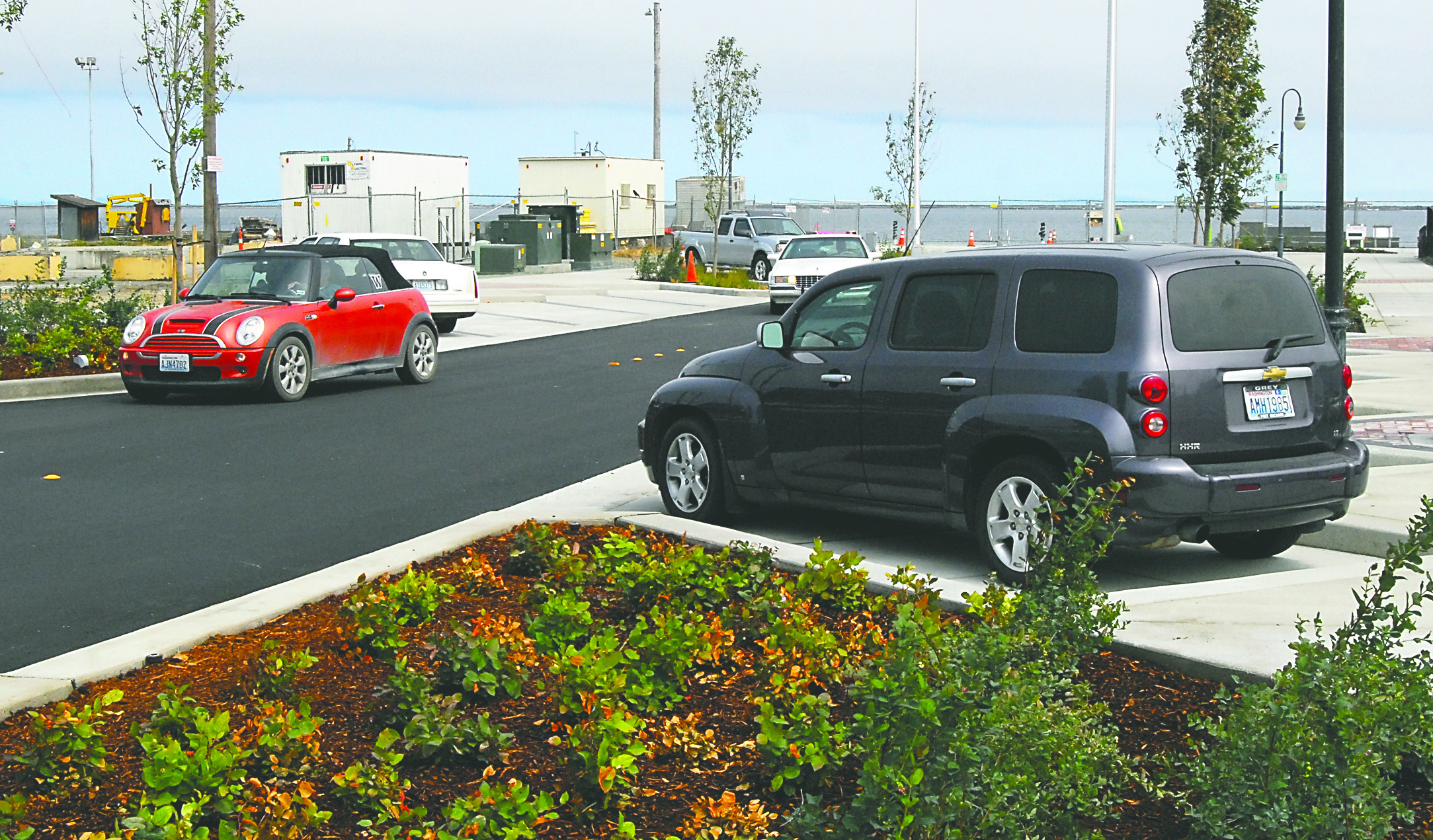PORT ANGELES — It’s not every parking space in the city that comes with a sign next to it directing drivers how to pull in.
Such spaces, however, can be found on the recently opened section of North Oak Street, south of the intersection with West Railroad Avenue along the waterfront.
These spaces, called reverse-angle parking spaces, are designed to be backed into rather than pulled into nose first, said Nathan West, the city’s community and economic development director.
The spaces, the first of their kind in the city, were installed with pedestrian and bicyclist safety in mind, West said, since a driver pulling forward out of a space would be able to better see people or traffic in the adjacent street lane than if the driver were backing up.
“A back-in, angled parking approach is really the best approach to take from a planning perspective,” West said.
Signs posted on street lights next to the spaces direct drivers to signal a right turn, pull past the space, stop and reverse into it.
“The city is well aware that we need to take a proactive approach to help drivers in Port Angeles learn about how this new type of parking works,” West said.
But can a driver be issued a traffic citation for parking nose-first in these spots?
“I’m not going to guarantee anything,” said Brian Smith, deputy Port Angeles police chief.
“We have an ordinance, We’ll enforce the ordinance,” Smith said, referring to the city ordinance that states drivers cannot pull across an oncoming lane of traffic on a two- way street to park on the opposite side of the street.
“You’re supposed to park on your own side of the street,” Smith said.
Smith said he could see the potential for a driver on Oak Street driving across the opposing traffic lane to pull nose-first into one of the angled spaces on the other side of the street, though he described this approach as doing it “the hard way.”
“Pulling across traffic is not normal to park somewhere,” Smith said.
“I don’t know that people are naturally going to do things the hard way.”
A simple traffic citation for pulling across traffic to park on the other side of the street would mean a $10 fine, Smith said, though drivers could be fined more if they were seen driving in a way that could cause an accident.
Smith said Port Angeles police will not devote additional officers to patroling the reverse-angle spaces, though the department has been supportive of backing into parking spaces when possible throughout the city.
“We’re strong advocates [for] backing into spaces, in terms of safety,” Smith said, adding that he and most other officers back their cars into the spaces in the police department parking lot.
Smith and West agreed that Oak Street’s new reverse-angle parking spaces might cause initial confusion, though both said they thought drivers will get used to it.
“I recognize it will take some time for people to get use to backing in, but once they get used to it, I don’t think it’s going to be a problem,” West said.
West said he knows reverse-angle parking spaces have been used for years in larger Washington cities, such as Seattle.
Marybeth Parker, spokeswoman for the Seattle Department of Transportation, said in an email that such spaces have been used for “a very long time” in the city, and are mainly used in areas where parking on an incline is necessary.
“We do not have a count of how many back-in angle parking spaces we have,” Parker said Friday.
Parker said that research in the 1970s showed three accidents related to nose-first parking occurred for every one related to back-in parking.
“Consequently, we believe strongly that back-in angle parking is safer than [nose-in] angle parking,” Parker said.
The reverse-angle spaces on Railroad were added to the northern section of Oak Street as part of the city’s ongoing $3.9 million esplanade project.
Reporter Jeremy Schwartz can be reached at 360-452-2345, ext. 5074, or at jschwartz@peninsuladailynews.com.

